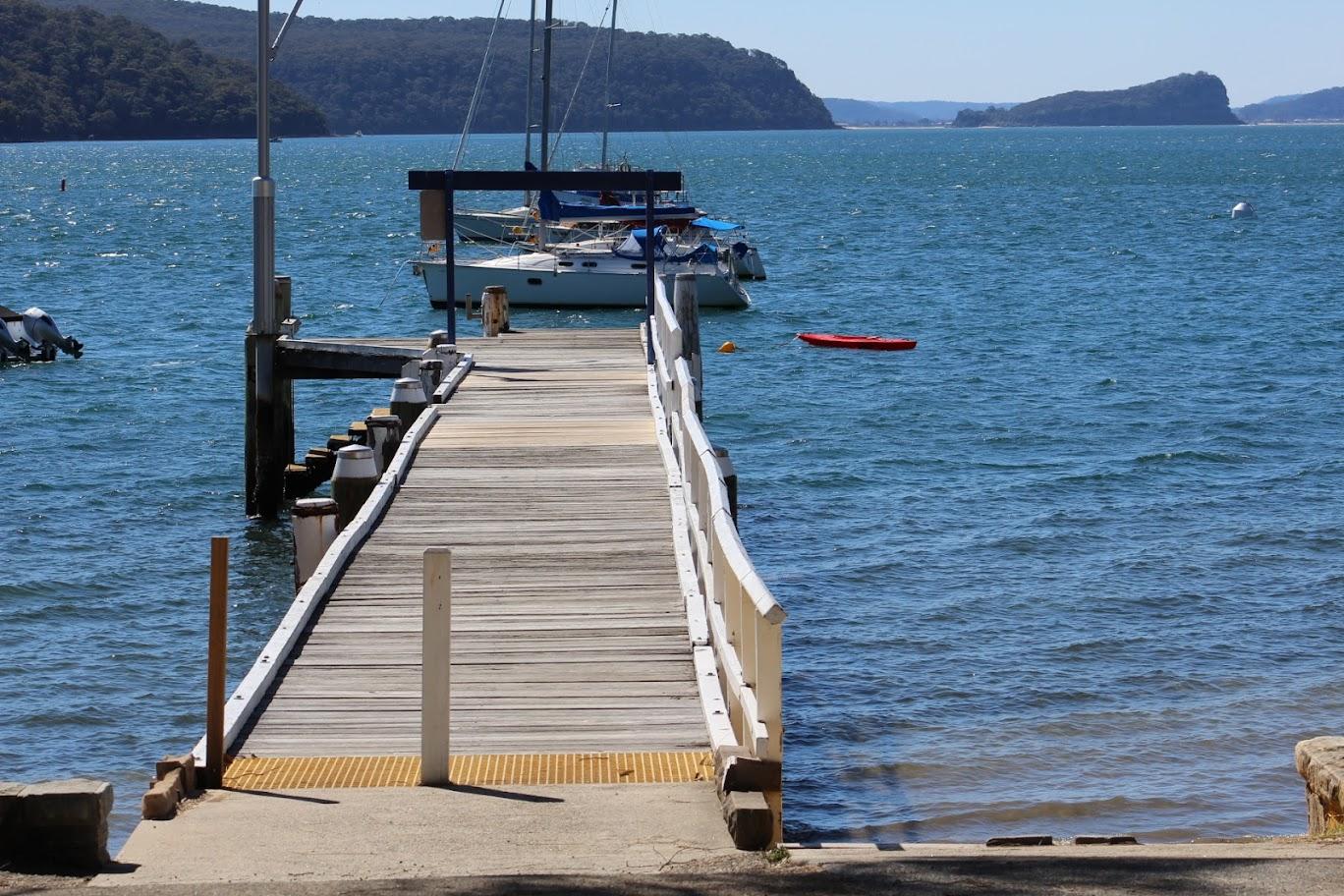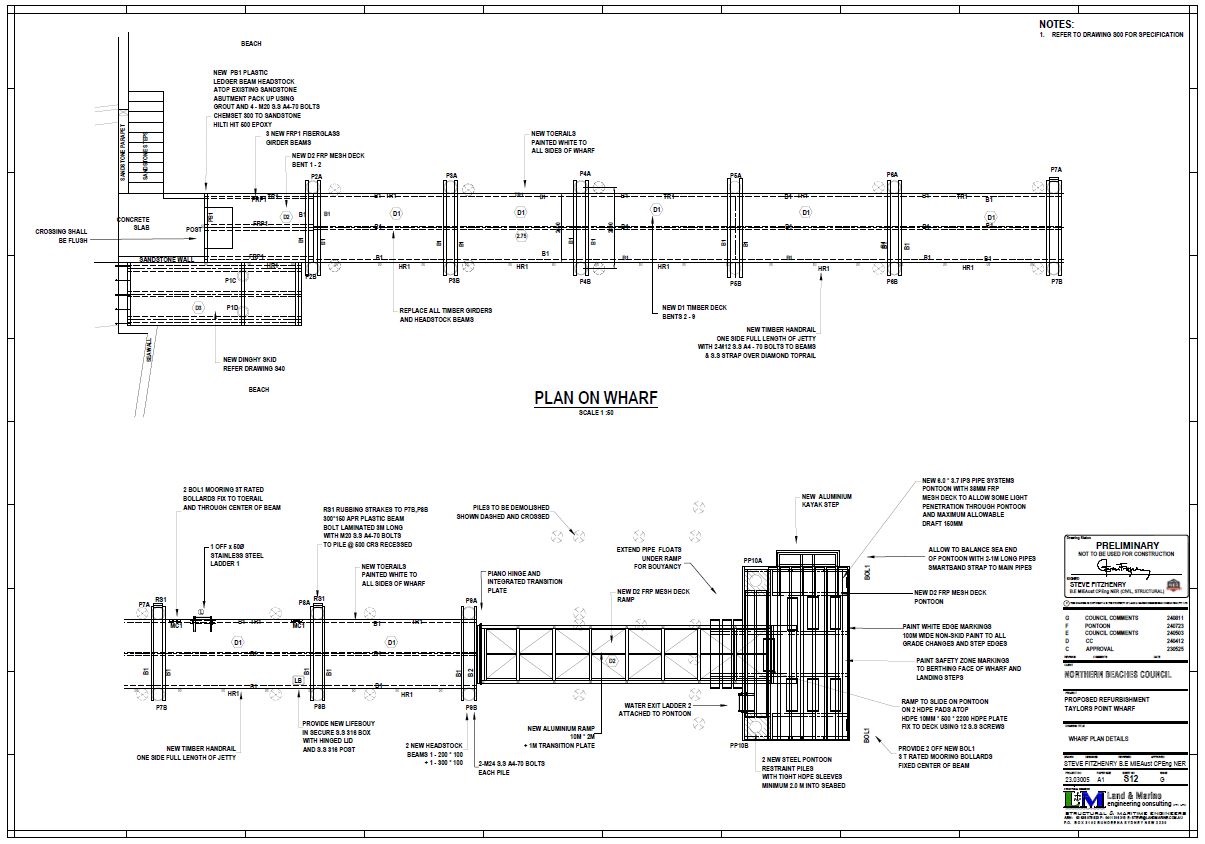Taylors Point Wharf Remedial Works to Commence during White's Seahorse breeding season: Floating Pontoon to be Added

A condition assessment of the wharf at the end of Taylors Point Road, off Hudson Parade, Clareville, revealed that major refurbishment is required to restore it to a good condition and comply with Australian Standards for marine infrastructure design.
As part of the process, council conducted an environmental assessment (Review of Environmental Factors - REF) to address the sensitivities surrounding the marine environment and to fulfil State Government requirements.
Council has stated some potential impacts that were considered include:
- loss of seagrasses including Zostera and Halophila (impacts to Posidonia seagrass would be avoided in so far as is reasonable and feasible)
- risk of dislodgement and dispersal of the aquatic pest Caulerpa taxifolia
- short‐term impacts to biodiversity, in particular White’s Seahorse, due to noise and localised loss of habitat and water quality impacts
- temporary loss of access to the wharf for pedestrians and vessels during the works, this will impact access for vessels boarding or disembarking passengers at the wharf
- temporarily fencing impacting community members who store dinghies in the rack at the end of Taylors Point Road (due to loss of access to the ramp next to the wharf)
- short‐term impacts to water quality during the works
- temporary loss of public access through the works area, and short‐term loss of public open space for recreational usage
- short‐term noise and vibration impacts associated primarily with the piling works, and
- short‐term impacts to visual amenity during the works.
Community consultation on the Review of Environmental Factors (REF) and detailed design ran for a period of 28 days throughout May/June 2024 and council received over 20 submissions.
Council states the feedback indicates that the community is actively engaged and invested in the future of the wharf, with a strong emphasis on enhancing functionality, ensuring environmental responsibility, and improving safety for all users.
Of those who participated in the consultation, 90% of respondents expressed support for the proposed remedial works, highlighting the essential repairs needed for the structure. Several participants strongly recommended incorporating a floating pontoon into the wharf design.
In light of the outcomes from community engagement, council has stated it will proceed with the inclusion of a floating pontoon in the wharf design. The revised design will focus on improving safety, accessibility, and overall functionality for boat users, particularly during different tide conditions.
The initial and August 2024 revised design includes the use of FRP1 fibreglass beams, the use of PB-1 beams - Polybutene (PB-1), like polyethylene and polypropylene, is a polyolefin or saturated polymer - along with plastic decking - all going into the estuary.
These products are used elsewhere for pontoons in the estuary.

Revised design drawing: NBC
One resident has pointed out the sediment that will be generated from the works proposed will smother the existing seagrass.
''Endangered Posidonia australis seagrasses and Zostera capricorni and Halophila ovalis seagrasses growing under the wharf would likely be lost. This is a particular issue for Posidonia, which shows poor recovery after disturbance.'' the resident stated
And;
''There has been a dramatic decline in the population of white seahorses. The loss of habitat will eliminate white seahorses from this site. There is no consideration given to the breeding cycle of the seahorses (September to February) or to their relocation.''
Council stated in its report; ''The DPI Fisheries permit issued to Council nominates the months when works can be undertaken in relationship to the seahorse breeding times.''
The REF states:
'White’s Seahorse, which is an Endangered Species under the FM Act and EPBC Act, are known to occur in the area. P. australis seagrass beds in Pittwater are listed as an Endangered population under the FM Act and also the EPBC Act.
In accordance with section 37 of the FM Act, a permit would be required for the translocation of any syngnathiformes found at the proposal area. The proposal would require this permit in order to relocate White’s Seahorse or any other syngnathids collected during the targeted pre‐works survey.
A draft Relocation Plan for Syngnathidae is included as Appendix G. Relocation of syngnathids would occur in accordance with the final approved Relocation Plan, to be included in the CEMP.'
The NSW DPI confirms the breeding season for White's Seahorse is from September to around February. They are listed as Endangered in NSW.
Seahorse 'hotels' were developed by local scientists a few years ago to address the loss of White's Seahorses.
''White’s Seahorse is endemic to the east coast of Australia. The species is named after John White, Surgeon General to the First Fleet, and is one of four species of seahorses known to occur in NSW waters. Favouring shallow-water estuarine habitats, it is currently known to occur in eight estuaries on the NSW Coast.'' the DPI states
''The primary cause for the decline in abundance of White’s Seahorse is the loss of natural habitats across their range in eastern Australia.''
However Council states on its project webpage that construction is expected to begin in late September and conclude by December 2024, weather permitting.
The works were costed at $800,000 in the current budget (excl. GST).
NSW DPI installed signage on Pittwater.